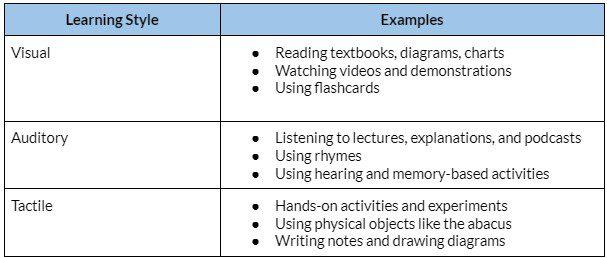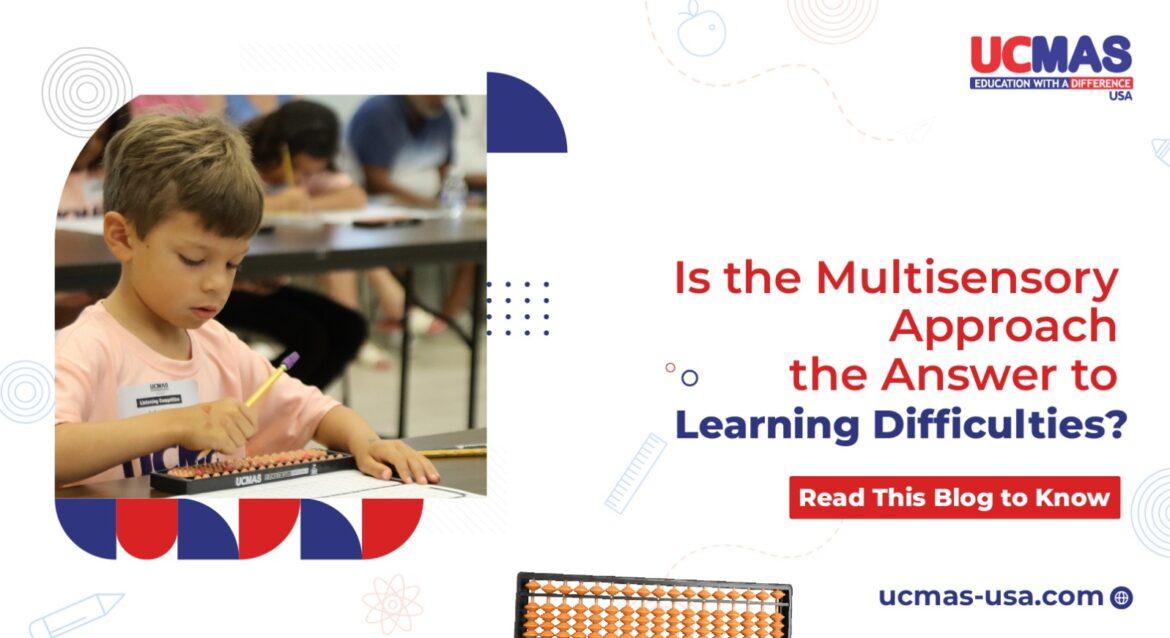What is Multisensory Learning?
Multisensory learning is a learning approach where students use more than one of their senses to understand and remember information. It acknowledges that each child may have a different learning style and unlike traditional methods, a multisensory learning experience includes visual, auditory, and kinesthetic approaches. This ensures no student is left behind with the VAK (Visual, Auditory, and Kinesthetic) approach, which includes visual aids, audiobooks, hands-on learning, interactive games, and other fun activities.

Learning is more engaging and memorable this way, as your brain gets used to different ways to process information. Is this learning style beneficial? Does it really help kids learn better?
Multisensory Learning: Does It Really Help?
The most important aspect of multisensory learning is its ability to cater to diverse learning needs effectively. By engaging multiple senses simultaneously, it enhances comprehension, retention, and application of knowledge.
This approach not only accommodates different learning styles but also promotes inclusivity, making learning accessible to all children, regardless of their abilities or challenges. We have listed a few of the proven benefits of multisensory learning that could enhance your child’s learning experience.
Improved Attention Spans
Multisensory learning captivates children’s attention by making learning interactive and enjoyable. Activities such as math games, hands-on activities, and role-play help students actively participate in the learning process, they become more engaged and motivated to explore the topic.
Improved Cognitive Skills
Abacus math fosters memory retention through the repetitive practice of bead movements. Children memorize sequences and patterns, strengthening their recall abilities in the process.
On the other hand, Vedic math relies heavily on mental techniques and shortcuts, which may not provide the same level of reinforcement for memory retention.
Enhanced Motor Skills
Multisensory learning enhances motor skills by involving activities that require physical movement and coordination, such as writing, building, or using tools like an abacus, flashcards, etc. Engaging multiple senses—seeing, touching, and hearing—strengthens connections in the brain, improving overall motor skills and making learning more effective.
Boosting Confidence
Multisensory learning boosts confidence by helping children succeed by applying their preferred learning styles. For instance, in a math class, a tactile learner may excel at solving problems using mental math, while an auditory learner may shine during group discussions. This cultivates a growth mindset, empowering students to tackle new challenges with confidence and enthusiasm.
Supporting Special Needs
Multisensory learning provides alternative options for special needs students to learn and understand information. For example, using visual aids like picture cards or diagrams assists children with autism spectrum disorder (ASD) in understanding concepts. Incorporating movement helps engage students with Attention Deficit Hyperactivity Disorder (ADHD) and promotes focus. The diverse learning styles of multisensory learning empower special needs students to overcome challenges and succeed academically.
Abacus Math: A Multisensory Learning Experience
The benefits of the multisensory approach are too many to ignore. In today’s competitive world, parents strive to give their children much more than the traditional classroom learning experience. So if multisensory learning is all that important, how can you introduce it to your child?
Well, the good news is that abacus math has been employing these techniques for centuries. Abacus math uses visual, auditory, tactile, and kinesthetic aids to ensure that children actively participate in the learning process and benefit fully from it. Here’s some insight into how abacus math provides a multisensory learning experience.
- Visual Engagement: Flashcards are an excellent aid in visual learning. Children are shown different number cards for a fraction of a second and are required to perform the necessary calculations. This process helps children enhance their memory retention by remembering the cards they see, while also increasing their calculation speed and concentration.
- Tactile Stimulation: Children manipulate the beads on the abacus, engaging their sense of touch and promoting hands-on learning.
- Auditory Reinforcement: One of the activities in the abacus math program involves calling out numbers that children then use to perform calculations within a limited time. This activity is particularly helpful for enhancing children’s concentration, memory retention, speed, and confidence.
- Integration of Senses: By combining visual, tactile, and auditory elements, abacus math offers a holistic multisensory learning experience that caters to different learning styles and maximizes comprehension and retention.
Whether your child is a visual learner, a hands-on explorer, or an auditory processor, the abacus provides a dynamic and engaging platform to excel in math and academics while having fun!
Frequently Asked Questions
How can I incorporate multisensory learning at home?
Is multisensory learning suitable for all ages?
Yes, multisensory learning is suitable for learners of all ages, from early childhood to adulthood.
Can multisensory learning help children with ADHD or dyslexia?
Yes, multisensory learning is particularly beneficial for children with ADHD, dyslexia, and other learning disabilities. Engaging multiple senses, provides alternative pathways for learning, helping these children overcome challenges and succeed academically.
How can multisensory learning improve information retention?
Multisensory learning improves information retention by engaging different parts of the brain simultaneously. When we use more than one sense, like seeing and touching, our brain creates stronger connections and associations with the information. This not only helps with concentration and focus but also makes it easier to remember the concepts learned.


